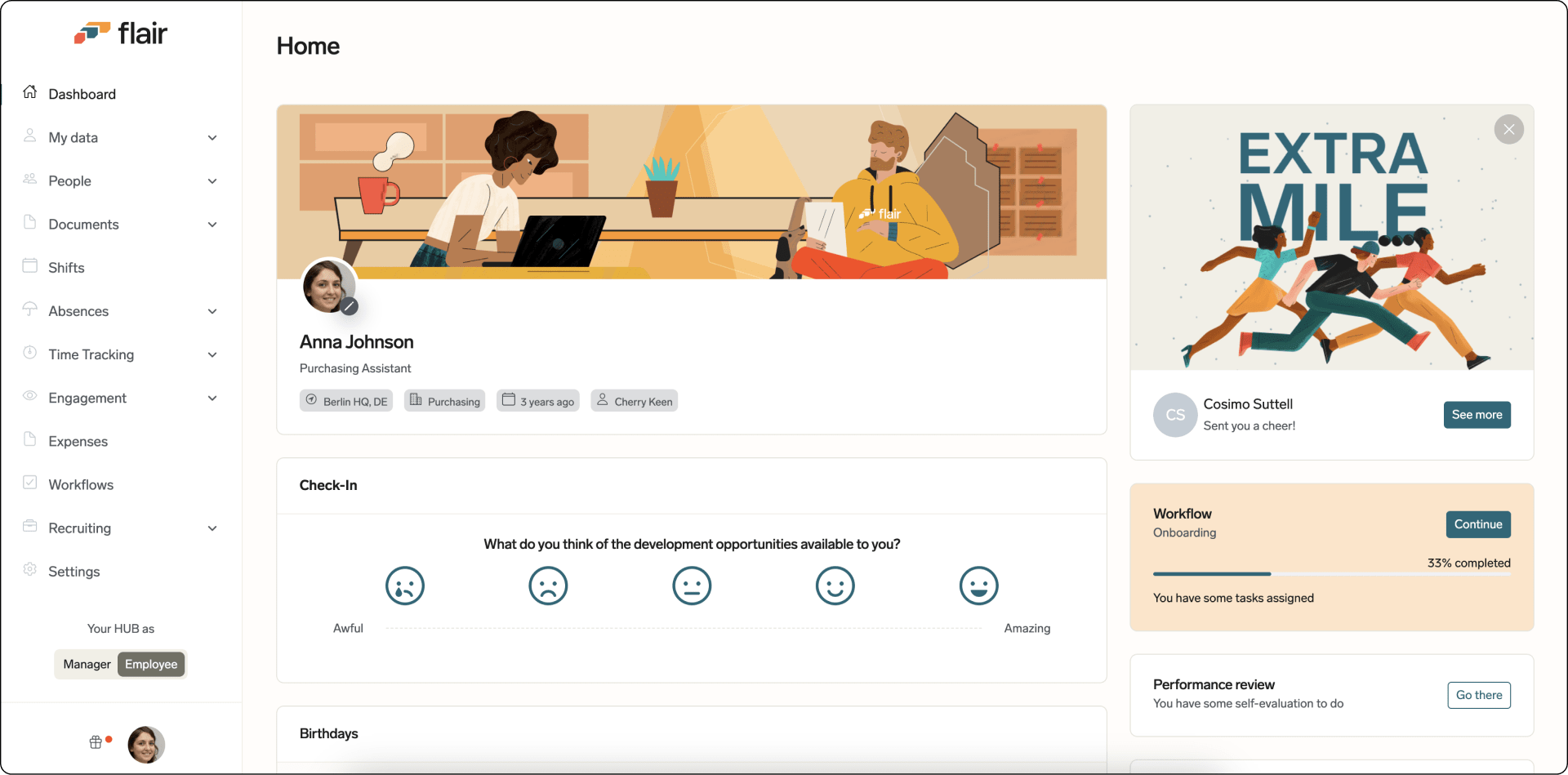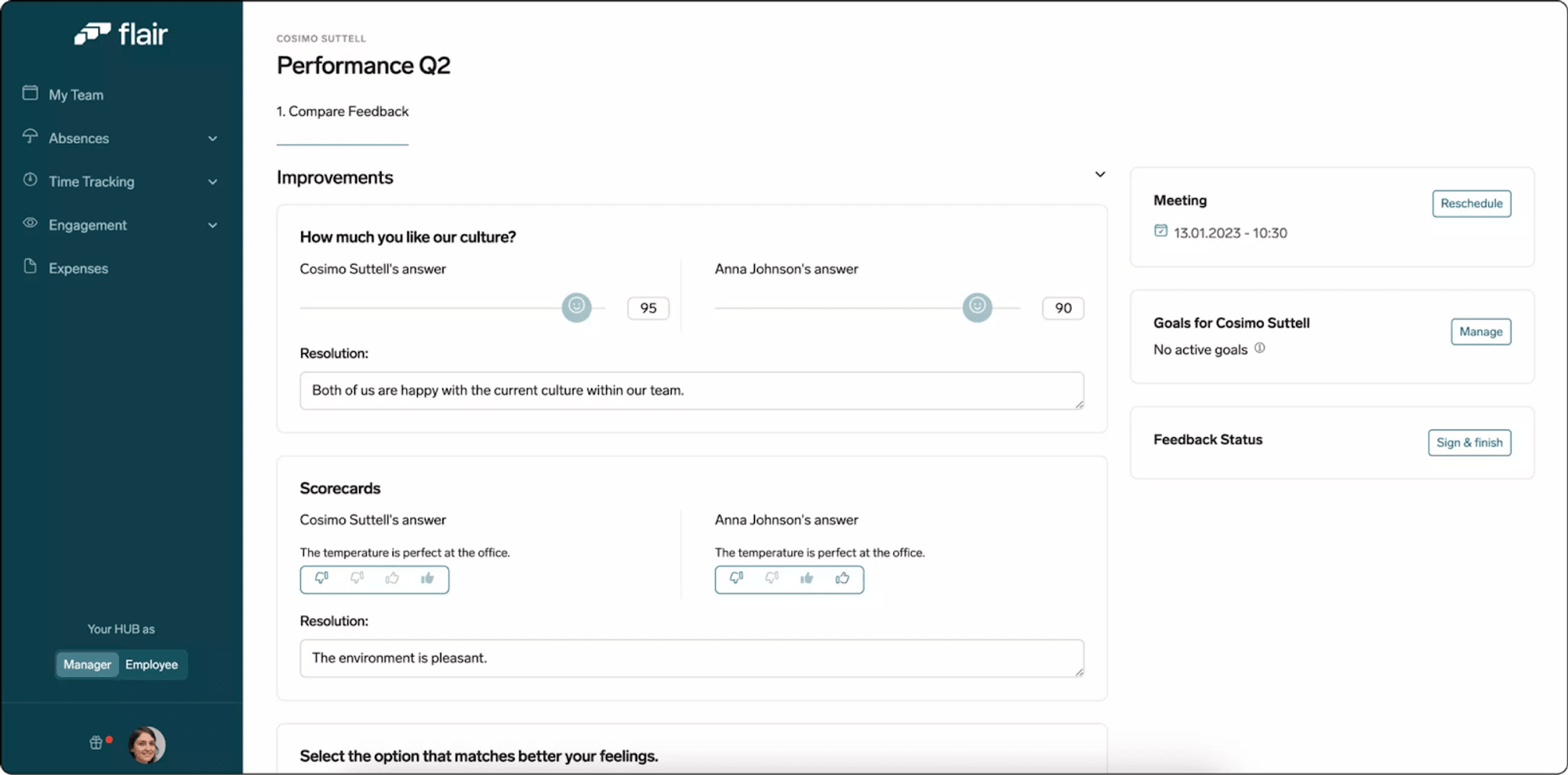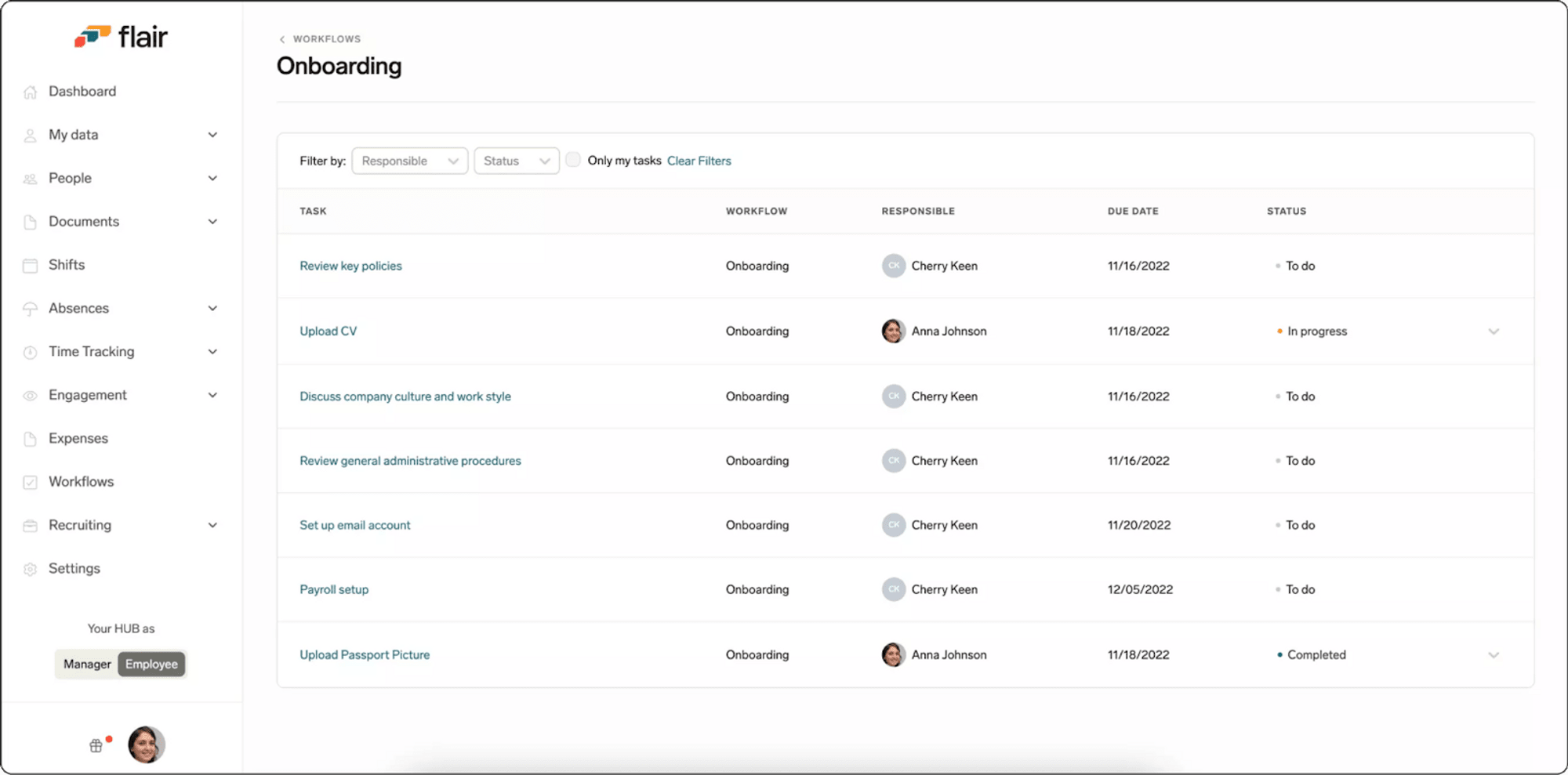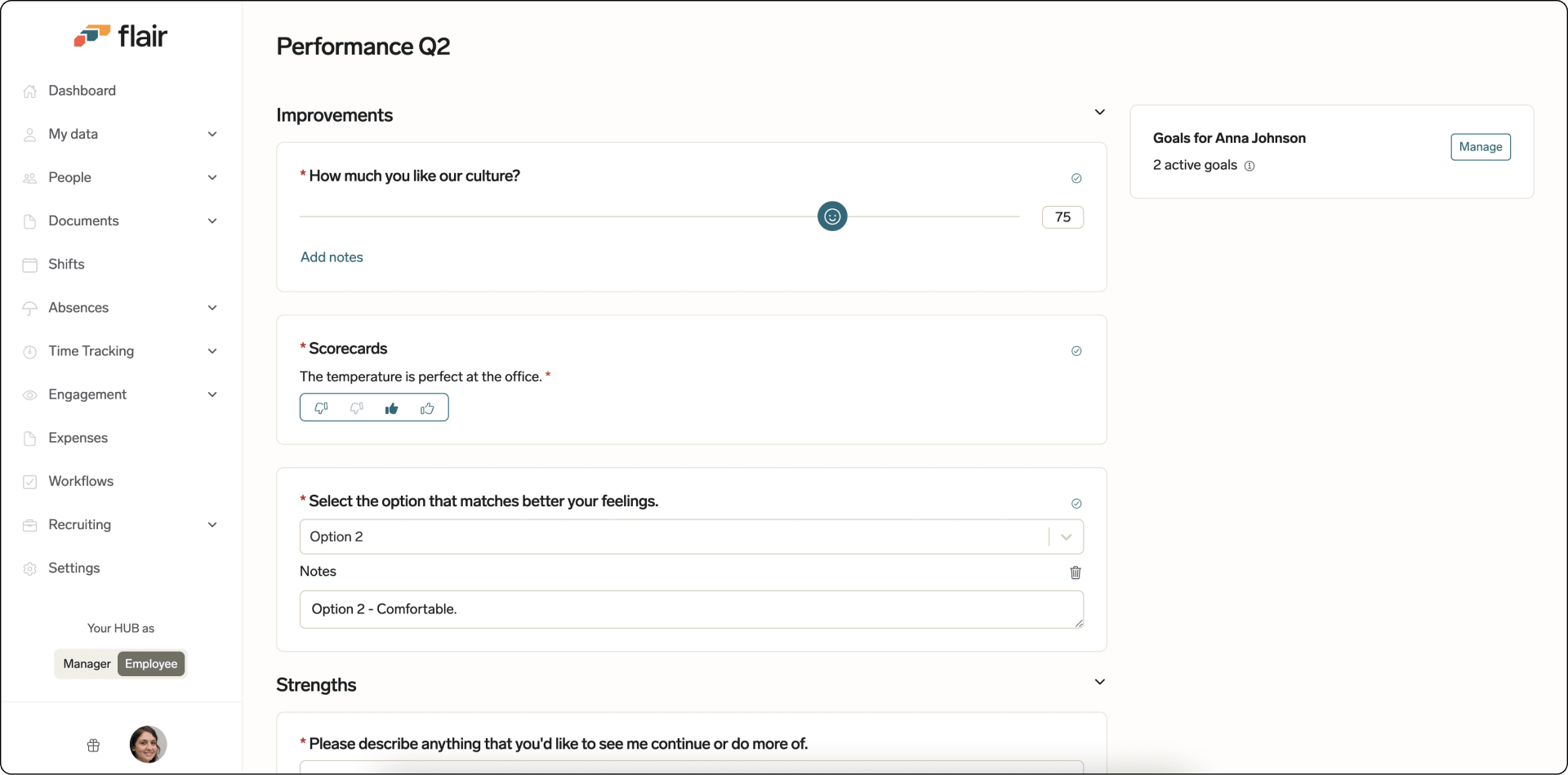Millennials – Understanding the Way They Work
Millennials make up the majority of the workforce today. How can you attract and retain the best millennial talents? And is it time to rethink some of the stereotypes?
- 20 Jun 2024
- Max 9 min read
The Number One HR Solution on Salesforce
Employee development is an important factor in employee retention and should be a central part of every employee’s career path. Here’s a summary of the key points.
Employee development is an important factor in employee retention and should be a central part of every employee’s career path. In this blog post, we summarize the key points about how you can really motivate, support, and retain your employees.
An employee development plan is essential – and every business should ingrain career development into its company culture. This can make a company much more attractive. For example, PwC experienced a 20% increase in job applications after enabling employees to personalize their career paths.
Allowing employees to define their career path means more than just giving them the opportunity to take part in training programs. It also involves providing employees with more flexibility to choose how and where they want to work – for instance by offering hybrid work arrangements.
Creating a long-term professional development plan for employees and offering room for personalization can bring many benefits to a company as well as its employees.
Before you can build the right development strategy, the first step is to understand the wants and needs of the employees. It’s important to remember that these can be different for each individual employee.
Do your employees want to hone their core skill set or would they rather reskill and try out something new as part of a job rotation plan? Would an entire team benefit from upskilling through some on-the-job mentoring or would it be more effective to discuss individual development goals with each employee? Whichever approach you take, you should ensure that your company’s learning culture is actually lived, while also communicating it externally on your career page.
Employee development activities should be part of the daily business of every company. They should not just be driven by human resources alone, but also led and conducted by team leaders. It takes time and resources to do this properly, resulting in additional costs for the company. But a well-implemented employee development program will soon pay off.
Employee development is a comprehensive topic that should cover the entire employee lifecycle. It all kicks off during the recruitment process. You should carry out an assessment to identify any skills gaps in your organization and hire top talent or create new roles to address these. Then, during the onboarding process, you should ensure that new hires are up to speed. To do this, you may want to consider setting up a mentorship program or job shadowing opportunities for new employees.
It can be helpful to ask your employees for their opinion. Sending out regular surveys is a good way to gauge the mood among your workforce, while also asking them whether they feel they have enough development and learning opportunities. A lack of career perspectives can reduce the motivation of your team members and lead to higher turnover – so be sure to take your employee’s suggestions seriously and consider adding them to their career development plans.
You can use flair to send out smiley check-ins to employees and track how satisfied they are with your employee development program. The simplicity of the surveys encourages as many employees as possible to participate, giving you a better idea of how happy your employees are with the development opportunities you have offered them. They can also share suggestions with you in the comments section.

Employee development should also be integrated into regular feedback talks and performance reviews. During an appraisal, it might become clear that an employee needs to develop their subject matter knowledge or learn new skills to earn a promotion. In this case, you can set personal career goals with them, define metrics, and offer further on-the-job training to help them reach their objectives.
flair offers features for performance reviews and OKRs that allow you to track an employee’s progress alongside company goals. By aligning your employee development program with business goals, it is easier to identify which team members could benefit from additional training and which ones are ready to step up to the next level.

A good way to give employees some say in their own development is to offer each employee a personal development budget. They can then choose their own e-learning courses that are relevant to their current job. You can also identify subject matter experts within your organization and ask them to hold an internal webinar to share knowledge within their team.
With many parts of the world still feeling the effects of the Great Resignation, it’s now especially important to train and retain your most experienced employees. Ambitious employees should have as many opportunities for development as possible to keep them motivated and increase their value to the organization.
According to a Gallup survey, 59% of millennials stated that learning and growth opportunities are extremely important to them when applying for a job. To attract the best talent, companies need to highlight the opportunities they offer their employees. A company career page or LinkedIn profile are good places to do this. Use a LinkedIn summary generator to create a LinkedIn bio that emphasizes your learning and growth opportunities.
It takes time to create an employee development strategy. There are many demands to consider and these differ from employee to employee. Here are nine key phases in setting up your employee development program:
1. Onboard New Hires: It’s crucial to pair up new employees with more experienced team members in their onboarding phase. As part of your job orientation program, you can assign an employee to act as a workplace buddy to a new hire, ensuring that their first weeks run smoothly and that they meet some of their new colleagues. Using flair’s HR app, you can tailor the onboarding journey for each individual employee or create workflow templates for different teams.

2. Identify Needs: While your new employees are settling into their job, it’s time to start checking which development needs they have. Be aware that not every employee will proactively ask for development opportunities – some might be unsure of which route to take. This is where your team leaders can help define a career path in regular 1:1 meetings with team members.
3. Establish Trust: Regular feedback talks shouldn't concentrate solely on the subject matter of the job. They are also an opportune moment for employees to communicate their wants and needs. For this to happen, you need to first establish a good level of trust – employees should feel that you value their input.
4. Encourage a Culture of Feedback: Digitizing your feedback process can help to build a culture of feedback and improve transparency and communication among team members. Using flair, you can set up quarterly feedback cycles and directly compare manager and employee feedback. It’s important that employees understand what they need to do to achieve a promotion or a pay rise – and these actions should be defined in their personal goals.

5. Share Success Stories: Achievements related to growth and development deserve to be celebrated and communicated externally as well as within the company. Doing so can reinforce employees’ motivation to pursue development opportunities, while also attracting potential job candidates.
6. Include Management: Employee development is not just a topic for HR professionals. Team leaders know their own team members better than most and are therefore better placed to recognize potential in employees. Managers and team leads are also responsible for promoting employees or giving them a pay rise, so they should be closely involved in development processes.
7. Promote Your Employee Development Program: Make sure every employee knows what career and development opportunities are available in your organization. A lack of a clear career path and development prospects are a common reason for employee turnover. Promoting your development program not only improves employee retention, but it can also make your company more attractive to potential applicants and encourage employee referrals.
8. Put New Skills Into Practice: Consider how employees can put their new skills and knowledge to use. Be open to changes and new opportunities that arise from your development program. To achieve the full potential, it may be necessary to tweak existing processes and responsibilities.
9. Facilitate Knowledge Sharing: Employee development doesn’t end as soon as an employee earns a certificate or gets the promotion they were looking for. Encourage successful employees to be advocates for your development program and organize sessions to allow them to share their knowledge.
You will need a careful strategy to effectively manage your employee development program and get the best results for your company. HR and team leaders should collaborate closely in the initial planning stages. The goal is to improve employee satisfaction and retention in the long term, but also to build up knowledge and skills within the organization.
It’s a good idea to start off with a needs analysis. Identify any skills gaps within your organization, listing any skills, roles, or teams that your company currently lacks. Don’t forget to take the employees’ wishes into account – ask them what courses they would like to take and which skills they want to learn or improve. You can also check what development opportunities are available at companies similar to yours.
Once you’ve assessed your needs, define some goals to measure the success of your program. Think about how you would like your company to be perceived by employees and potential applicants. Define how you will make employee development an integral part of your company culture.
Finally, once you’ve set out your goals, it’s time to plan the steps to be taken. There are three main approaches you can take – or you can combine the options to create your development program:
During employee appraisals and development programs, managers should keep an eye out for particularly talented staff and employees who display leadership qualities. These team members are extremely valuable, but also the most likely to pursue other opportunities if they are not given the recognition they deserve. Promoting talented employees not only helps you retain your top talent, but also reduces the costs associated with recruiting managers from elsewhere.
The development opportunities you offer should follow a clear strategy, but also be flexible enough to meet each employee’s individual needs. Setting out clear development goals will help you track the success of your program so you can make adjustments if needed. Employee development opportunities are an important part of the employee experience, which contributes to your company’s overall success.
flair software can help you set out your development goals, plan regular feedback meetings, and record goals and progress to improve transparency. Employees and managers can record which skills each employee has, which can help with shift planning. You can also store certificates in the flair Employee Hub with our document management feature.
Book a flair demo today and discover how we can help you put your employee development strategy into action and uncover your next leaders.
Join flair’s newsletter to receive the latest tips & trends in the HR world.

